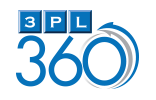 Running any business with a supply chain requires analyzing each component to make sure the company is running as efficiently as possible. Whether your business is in home improvement, hi-tech, retail or any other industry that involves costs, you need to reduce waste and maximize productivity. Supply chain analysis is the study of vendors, manufacturing materials, value, functions, costs, processes and forecasts to make sure your company is as profitable as possible.
Running any business with a supply chain requires analyzing each component to make sure the company is running as efficiently as possible. Whether your business is in home improvement, hi-tech, retail or any other industry that involves costs, you need to reduce waste and maximize productivity. Supply chain analysis is the study of vendors, manufacturing materials, value, functions, costs, processes and forecasts to make sure your company is as profitable as possible.
Eliminating Weak Links
A diagram that connects the components of your operation from product creation to the consumer is an excellent way to understand supply chain analysis. If you run a trucking company, for example, the most obvious component is the cost of transporation. This cost includes truck drivers, fuel, lodging, insurance and maintenance. By analyzing this supply chain you can make determinations about cost efficiency. Supply chain analysis may lead to the conclusion of investing in trucks with better gas mileage. If the lodging costs are too expensive it may inspire you to craft a partnership with a hotel to get cheaper rates since you will bring them steady business.
When you see the big picture as a series of links it gives you more insight on managing costs than if you view it as just one big operation that either produces a profit or loss. As the old saying goes, you are only as strong as your weakest link. By strengthening all your links using supply chain analysis you ultimately improve your entire company.
Value Analysis
Supply chain analysis isn”t just looking at costs when it comes to determining value. It can also involve looking at functions. Comparing two different software programs, for example, can be an effective way to select the most appropriate program for your business. An expensive program may be favorable over a cheaper program if it provides useful functionality that improves the quality and flow of your operation. This can mean better savings and productivity over the long term, which means better value.
Sequential or Concurrent Processes
Some supply chains depend on a specific sequence of events whereas others can involve multiple events happening at once. In the hotel business, for example, a reservation must be made first except in the cases of walk in guests. Once the reservation is made other components in the supply chain analysis can be sold to the customer such as movies, food delivery and business services. These services might involve other vendors who in effect become part of the supply chain. This scenario is a sequential process.
A concurrent process might involve a web design company that offers a package deal for clients that simply turn all design and content ideas over to an all in one company that employs various tech professionals who work together on the same project. One person might handle content development, another handles programming and another focuses on marketing. Each team member might work completely independent of each other at the same time. Let”s say they work on the project for six months and then charge you $10,000, creating shockwaves. Careful planning and supply chain analysis using process mapping can prevent such a disaster from happening.
Supply Chain Analysis Forecasting
One of the strongest arguments for leveraging supply chain analysis is to make more accurate spending forecasts based on historical data. When costs remain stable or fall in seasonal patterns for long periods they become predictable. By analyzing historical data you can decide on alternatives to the components that seem to have unpredictable costs. Reducing volatility and surprises can be key to making better forecasts, which is essential when budgets tighten.


